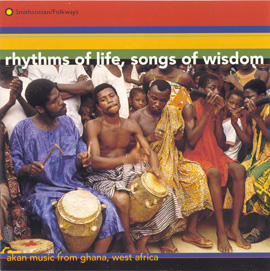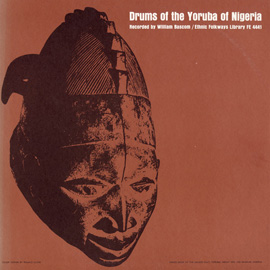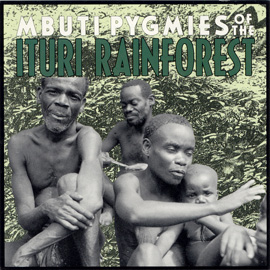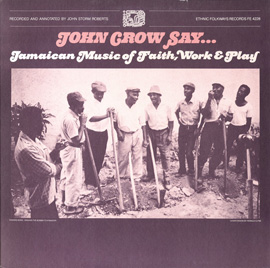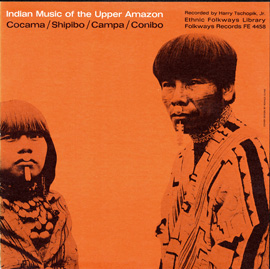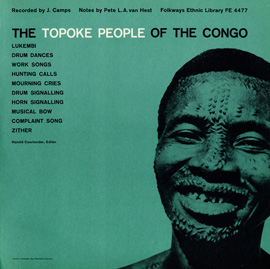Drum Sounds and Their Meanings
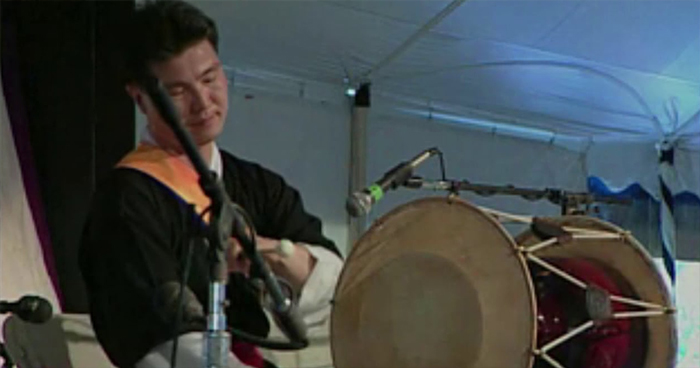
One of the few things we know about our universe is that everything in it is vibrating, is in motion, and has a rhythm. Rhythm is anything that repeats itself in time: the moon cycling around the earth, sap rising in the spring, the pulsing arteries of the body. There are three fundamental rhythms that each of us experiences: the personal rhythm of the human body, the larger social rhythm of the family, tribe or nation, and the enveloping cosmic rhythms of the planets and the universe. The tracks featured here are examples of the ingenious ways that we use drums and percussion of all kinds to manipulate and experience these rhythms; to communicate, play, work, as well as express cultural connections to death, war, and spirituality.
"Talking Drums":
Drums of Communication
There are many ways of signaling or "talking" using drums. The dun dun is the most portable type of "talking drum." This hourglass-shaped two-headed drum, whose twin heads are lashed together by thongs of gut or leather, is played by increasing or decreasing the tension on these thongs. This is what makes this drum "talk." When squeezed the sounding of the membranes rises and falls, resembling a vocal sing song effect. These signature risings and fallings communicate a narrative that is often answered by a vocal incantation. Many central and western African cultures possess a sophisticated communication system consisting of hollowed out giant logs known as slit gongs. These gongs provided the people of the forest with a percussive telegraph system. In ensemble playing, most of the drums are engaged in purely rhythmic cycles, laying down the beat for the dancers. But there is usually one drummer who will be drumming coded signals that tell the musicians and dancers when to start and stop various patterns.
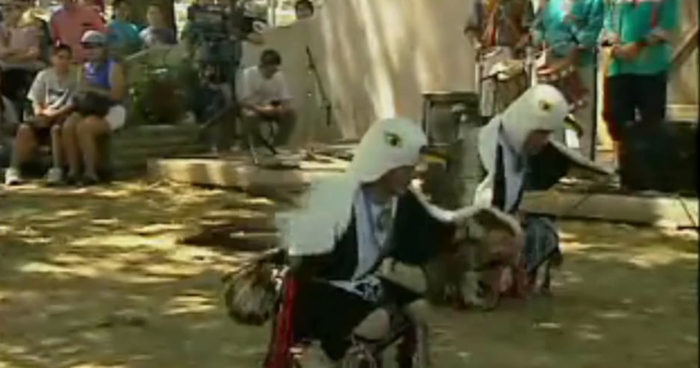
Conveying Joy, Expressing Life:
Drums of Play
There are many rhythms that simply express the joy of life. In many traditional cultures, tribal cohesiveness is maintained through a calendar of ritual events in which the village frequently dances from dusk until dawn. Many people join in, so there is usually a lot of call and response with people singing in answer to the drums or other percussive instruments. These events are about celebrating together, as a tribe, a clan, a village. For example, the gamelan brings communities together to play in neighborhood orchestras. The Balinese gamelan is usually very large so it really does take a village to perform many gamelan compositions. Community drumming also allows for continuity in passing on folk traditions from generation to generation.

Easing the Work Day:
Drums and Songs of Work
Music often makes work more enjoyable. Rhythmic songs are used to pass the time and energize the group. As humans transitioned from the rhythms of hunting and gathering to those of seeding and harvesting, the drum made boring, repetitive movement almost fun. The productivity of a work group can often depend on the musician who accompanies them. A good musician who can find a rhythm suited to each worker's movement will help all to accelerate, while enhancing worker solidarity and helping to pass the time with the playfulness of movement, rhythm and noise.
The Sound of Conflict:
Drums of War and Battle
The drum beats. The adrenaline flows. And we either dance or we fight. Drums were the driving force behind the percussive din that characterized the ancient art of war. The goal was to energize your troops while terrifying your enemies with the thunderous noise you could make. As warfare grew more complex, the function of the drum changed. Armies developed a codified set of drum rudiments that allowed leaders to communicate various messages to the troops and signal maneuvers. As the technology of war changed, the drum's usefulness on the battlefield diminished. With automatic weapons, armies can now fire at will and electronic communications replaced the rudimentary drum commands. In some sense the drum returned to its original use. Modern armies continue to march to the beat of the drum, though now the purpose of this rhythmic energy is to not only stimulate the body, but also to forge a sense of group unity.
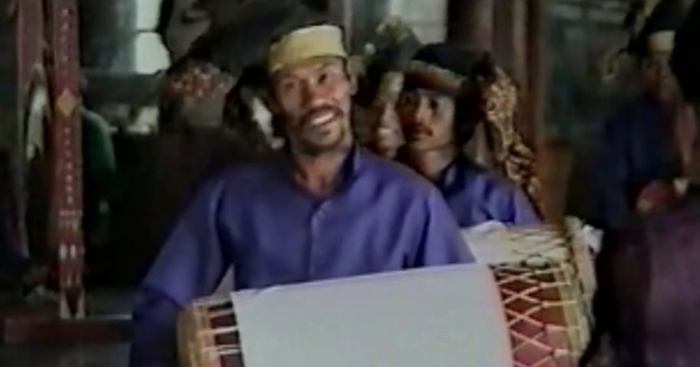
Heralding the Inevitable Unknown:
Drums of Death
Death dances with each of us. Following birth, it is life's second greatest transformation. The drum beat, the ringing of the bell, the funeral procession driven by percussive rhythms are all manifestations of our use of percussion as human expression when facing death. When you memorialize a death you sing praises from the living to the dead. Sometimes it is the tale of an entire lifetime, sometimes a lament of sadness. Again you will often find the massing of instruments and vocal incantations that signify a shared experience, as opposed to musical soloing.
Bridge Between the Human and Spirit World:
The Power of the Shaman's Drum
Shamans are professional trance travelers, handling communication between this world and the spirit world. Across many cultures they come as healers, psychics, specialists in non-ordinary states of consciousness, clairvoyance and out-of-body travel; they lobby the higher powers to assure a good hunt, as well as diagnose and cure the sick and assist the dying in their transition to the spirit world. A shaman typically needs three things: power songs to summon his spirit allies, spirit allies to guide him to the World Tree, and a drum to ride there. The shaman uses incantation, drums, rattles made of membranes, wood and metal, or gourds wrapped with beads to change human brainwave functions. There are many techniques of the shaman. The one thing they all have in common is their ability to create trance. A shaman drives the trance and travels to deep sacred space, to cure a disease or foretell the next harvest's conditions.




